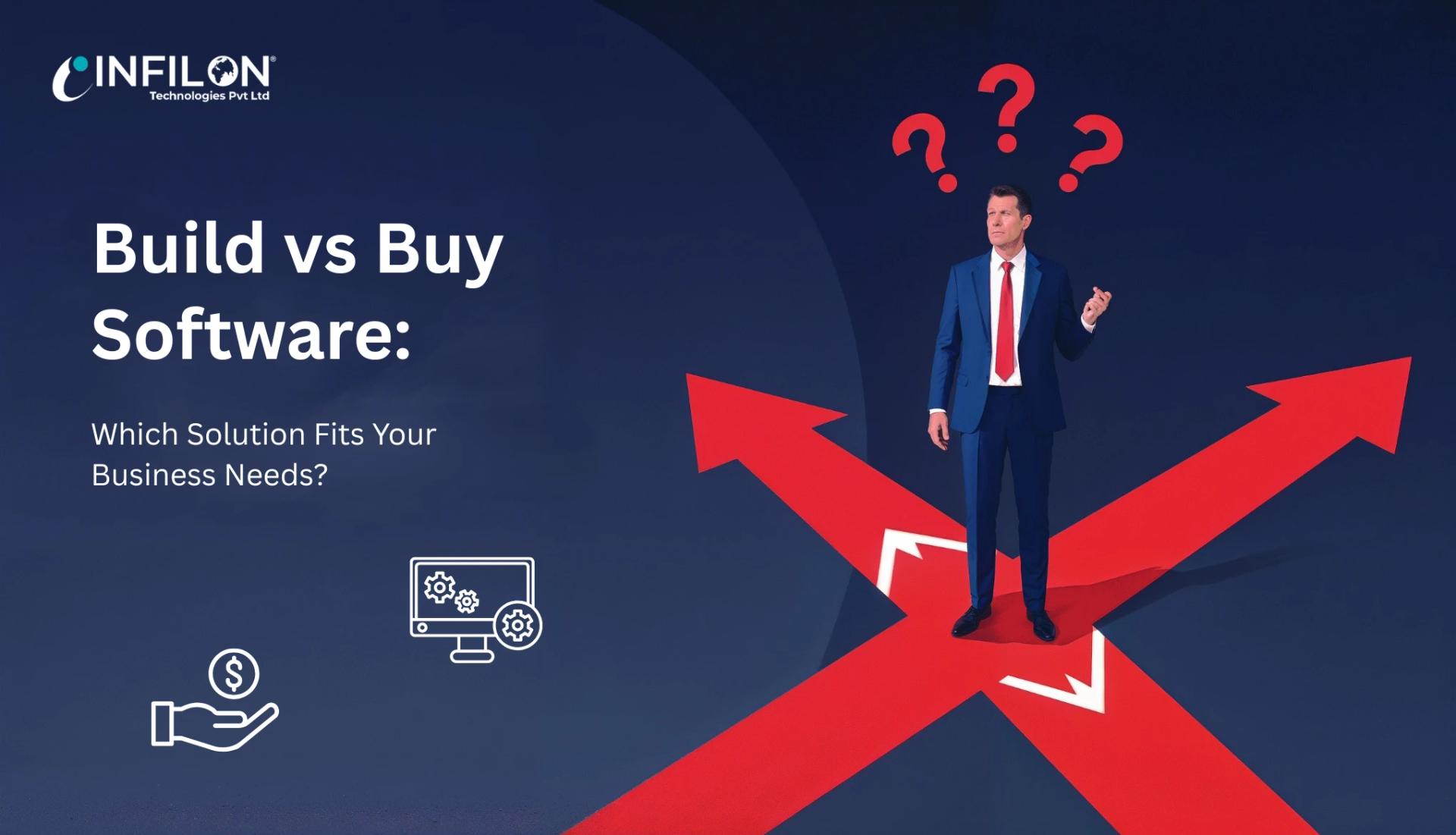Deciding on whether to develop custom software, or purchase off-the-shelf software is an important strategic decision that can significantly affect your organization's long-term success, agility, and cost structure. Both options offer unique advantages, but finding the right fit requires careful consideration of your business requirements, budget, growth goals, and industry specifics. In this blog, we will look at every angle we can, including suppliers and other development companies, plus estimates of costs, scalable products, and frameworks for helping decide whether to build or buy.
What Does 'Build vs Buy' Mean?
Build: Custom Software Development
Opting to build means partnering with a software development company to create tailored solutions that align precisely with your unique workflows, compliance needs, and future vision. This approach is best for organizations seeking competitive differentiation, unique product offerings, or deep integration with existing infrastructure.
Buy: Off-the-Shelf Software
Buying software involves licensing an existing solution—ready for rapid deployment—which typically requires some degree of adaptation but offers speed and cost advantages. This is suitable when standardized tools can support business requirements efficiently and budget constraints make custom solutions impractical.
Comparison Table: Build vs Buy
Aspect | Build (Custom Software) | Buy (Off-the-Shelf Software) |
|---|---|---|
Customization | Very High | Limited |
Upfront Cost | High | Lower |
Ongoing Cost | Maintenance, updates | Licensing, subscription fees |
Speed to Market | Months/Year | Weeks |
Scalability | Tailored to growth | May require upgrades |
Control | Full—features, security, roadmaps | Limited by vendor |
Competitive Edge | High—unique differentiators | Low—same as competitors |
Vendor Risk | None—fully owned | Dependency risk |
Key Considerations
When software will be a key differentiator or is embedded in your customer experience, custom software development is generally a better long-term fit. Off-the-shelf software is a better solution for non-differentiating, business-enabled processes.
Cost Analysis
Build: Large upfront costs but generally lower long-term licensing/maintenance costs. Many software development companies advocate this option as a means of achieving long-term ROI and it is especially important for unique business needs.
Buy: Low upfront costs, but the license/maintenance/support/usage fees will add up over years. You should evaluate the 'true cost' over a 3-5 year period for an accurate comparison.
Speed and Time-to-Market
Buying enables rapid implementation—perfect when you need “software development in USA” or globally and must move quickly to address market demand. Building, however, takes more time as solutions are created from scratch for your environment.
Control and Flexibility
Custom software development delivers full control over feature roadmap, data security, and integrations. This is vital if you operate in regulated industries or envision frequent changes. Purchased software can limit your agility as you must wait for vendor updates and may be locked into their ecosystem.
Scalability and Ongoing Maintenance
Build: Scale your solution as business grows; adapt to new requirements seamlessly.
Buy: Scaling may mean added license fees or switching platforms if you outgrow the tool.
Support and Maintenance
A software development company provides dedicated maintenance contracts for custom builds, while vendors supply update, support, and incident management for their off-the-shelf products.
Pros and Cons Breakdown
Build (Custom Software)
Pros:
Full alignment with business processes
No vendor lock-in, total data ownership, tailored integration
Unique features and competitive edge
Cons:
High initial investment and longer development
Requires expert resources and ongoing upkeep
Buy (Off-the-Shelf Software)
Pros:
Fast implementation and lower starting costs
Immediate access to proven tools and regular updates
Vendor support for issues or enhancements
Cons:
Limited customization options
Potential vendor dependence and feature limitations
When to Build vs When to Buy
Build When
Your requirements are unique or involve intellectual property
You need a competitive technological advantage
Security, scalability, or compliance are top priorities
Budget allows for up-front investment
Buy When
Needs are generic or best-practice tools already exist
Fast time-to-market and budget are critical
Internal resources to maintain code are limited
The Hybrid Approach
These days, many organizations have adopted a hybrid strategy: buy a fundamental set of tools that do not differentiate and then do custom software development for strategic components. Hybrid capitalizes on speed of deployment in addition to targeted innovation to extract the most return on investment with little risk.
Choosing the Right Software Development Partner
The right software development company acts as a strategic advisor—assessing your needs, advising on build vs buy, and ensuring your investment aligns with future goals. Whether you pursue custom software development or off-the-shelf tools, work with partners who understand your industry, regulatory landscape, and vision for scalable growth.
Choosing a build or buy strategy truly is more than a technical or financial decision - it is a well-trailed decision that will reshape the future competitiveness and preparedness of your organization. Carefully weigh your priorities, consider all hidden costs, and lean on expert guidance from a reliable software development company to select the best path.
Conclusion
The decision to build versus buy software is not a cost issue - but about aligning technology to your longer-term vision of what your business will be.
If you need flexibility, scalability and differentiation, an investment in custom software development makes sense. If you need a solution now and the upfront investment is required to be low, then buying commercial off-the-shelf software solutions makes sense.
Work with a trusted firm that has expert experience in software development in USA, to both gain expert recommendations on your goals and help to assess the right solution for your organization. With the right focus and trusted development vendor your software solution can be a key driver for your growth and innovation agendas.



